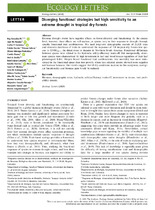Mostrar el registro sencillo del ítem
Diverging functional strategies but high sensitivity to an extreme drought in tropical dry forests
| dc.creator | Gonzalez-M, Roy | |
| dc.creator | Posada, Juan M. | |
| dc.creator | Carmona, Carlos P. | |
| dc.creator | Garzón, Fabian | |
| dc.creator | Salinas, Viviana | |
| dc.creator | Idarraga-Piedrahita, Alvaro | |
| dc.creator | Pizano, Camila | |
| dc.creator | Avella, Andres | |
| dc.creator | López Camacho, Rene | |
| dc.creator | Norden, Natalia | |
| dc.creator | Nieto, Jhon | |
| dc.creator | Medina, Sandra P. | |
| dc.creator | Rodríguez-M, Gina M. | |
| dc.creator | Franke-Ante, Rebeca | |
| dc.creator | Torres, Alba M. | |
| dc.creator | Jurado, Ruben | |
| dc.creator | Cuadros, Hermes | |
| dc.creator | Castaño-Naranjo, Alejandro | |
| dc.creator | Garcıa, Hernando | |
| dc.creator | Salgado-Negret, Beatriz | |
| dc.date.accessioned | 2021-01-27T23:50:16Z | |
| dc.date.available | 2021-01-27T23:50:16Z | |
| dc.date.issued | 2020 | |
| dc.identifier.uri | http://hdl.handle.net/20.500.11761/35659 | |
| dc.description | Extreme drought events have negative effects on forest diversity and functioning. At the species level, however, these effects are still unclear, as species vary in their response to drought through specific functional trait combinations. We used long-term demographic records of 21,821 trees and extensive databases of traits to understand the responses of 338 tropical dry forests tree species to ENSO2015, the driest event in decades in Northern South America. Functional differences between species were related to the hydraulic safety-efficiency trade-off, but unexpectedly, dominant species were characterised by high investment in leaf and wood tissues regardless of their leaf phenological habit. Despite broad functional trait combinations, tree mortality was more widespread in the functional space than tree growth, where less adapted species showed more negative net biomass balances. Our results suggest that if dry conditions increase in this ecosystem, ecological functionality and biomass gain would be reduced. | spa |
| dc.format | application/pdf | spa |
| dc.format.extent | 13 | spa |
| dc.language.iso | spa | spa |
| dc.relation.uri | https://onlinelibrary.wiley.com/doi/10.1111/ele.13659 | spa |
| dc.rights | Attribution-NonCommercial-NoDerivatives 4.0 Internacional | * |
| dc.rights.uri | http://creativecommons.org/licenses/by-nc-nd/4.0/ | * |
| dc.source | reponame: Repositorio Institucional de Documentación Científica Humboldt | spa |
| dc.source | instname: Instituto de Investigación de Recursos Biológicos Alexander von Humboldt | spa |
| dc.subject | Biomass | spa |
| dc.subject | Demographic rates | spa |
| dc.subject | Hydraulic safety-efficiency trade-off | spa |
| dc.subject | Investment in tissues | spa |
| dc.subject | Trait probability density | spa |
| dc.title | Diverging functional strategies but high sensitivity to an extreme drought in tropical dry forests | spa |
| dc.type | info:eu-repo/semantics/article | spa |
| dc.type.spa | Artículo | spa |
| dc.identifier.doi | https://doi.org/10.1111/ele.13659 | spa |
| dc.title.english | Diverging functional strategies but high sensitivity to an extreme drought in tropical dry forests | spa |
| dc.publisher.edition | Regular | spa |
| dc.publisher.journal | Ecology Letters | spa |




